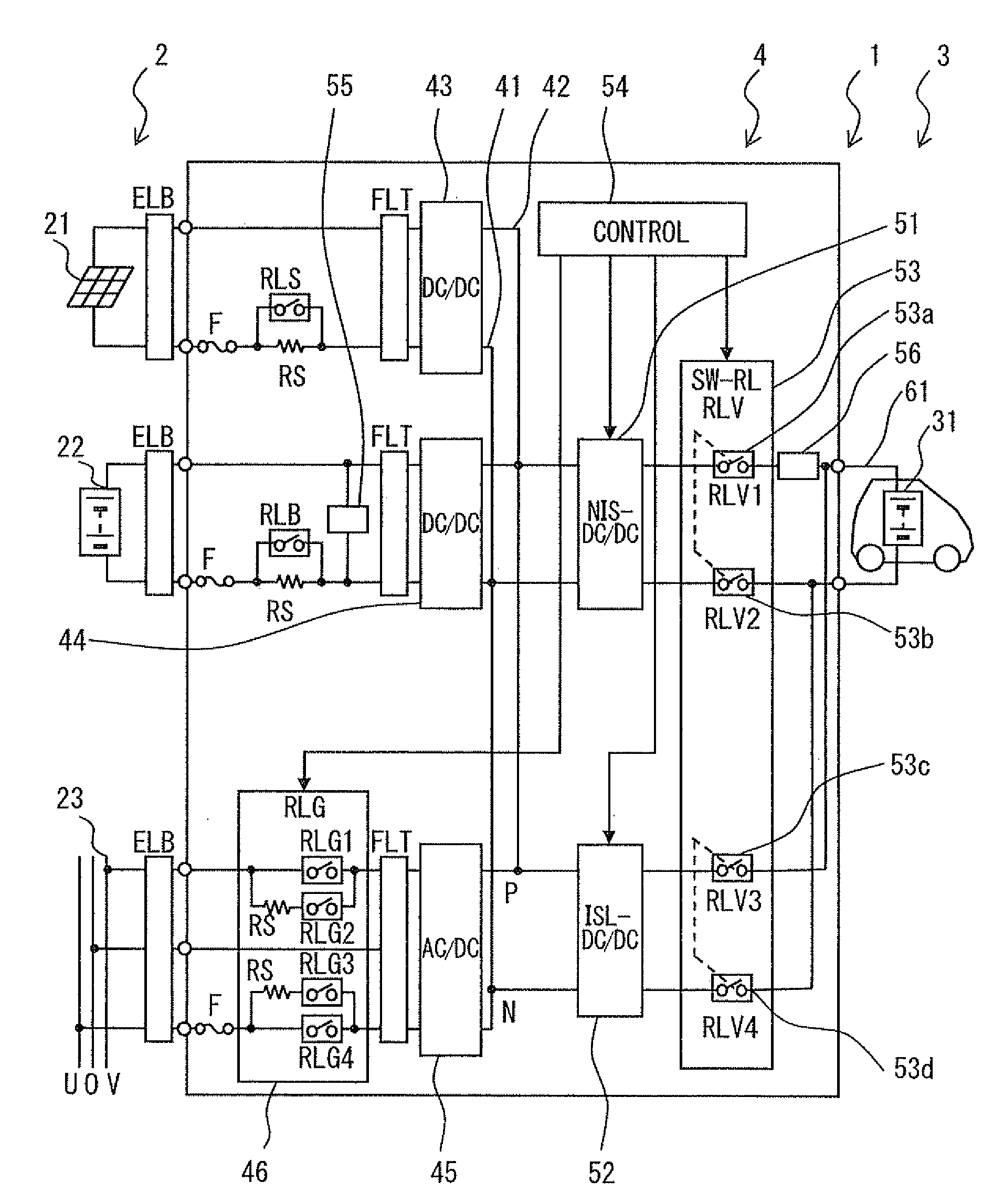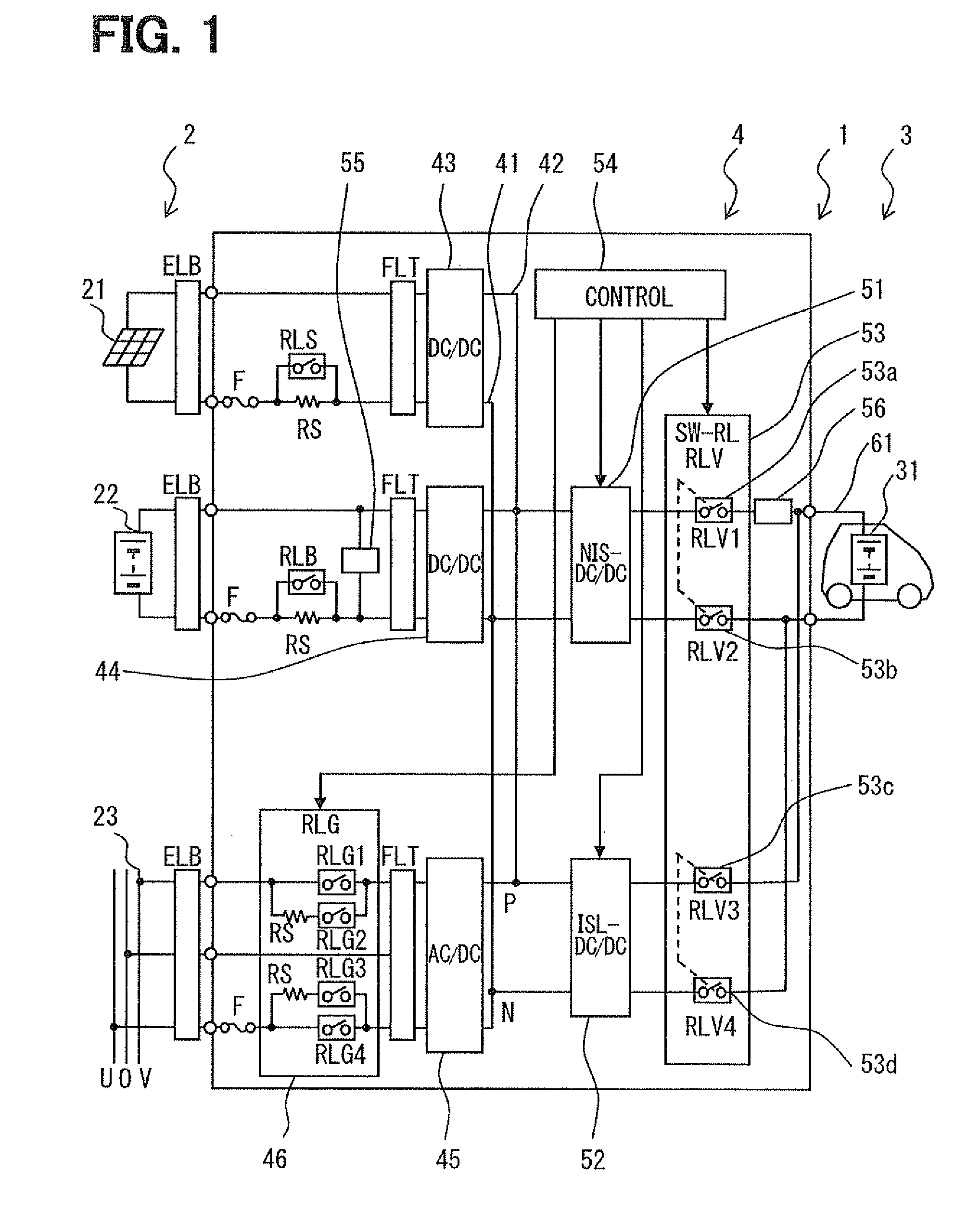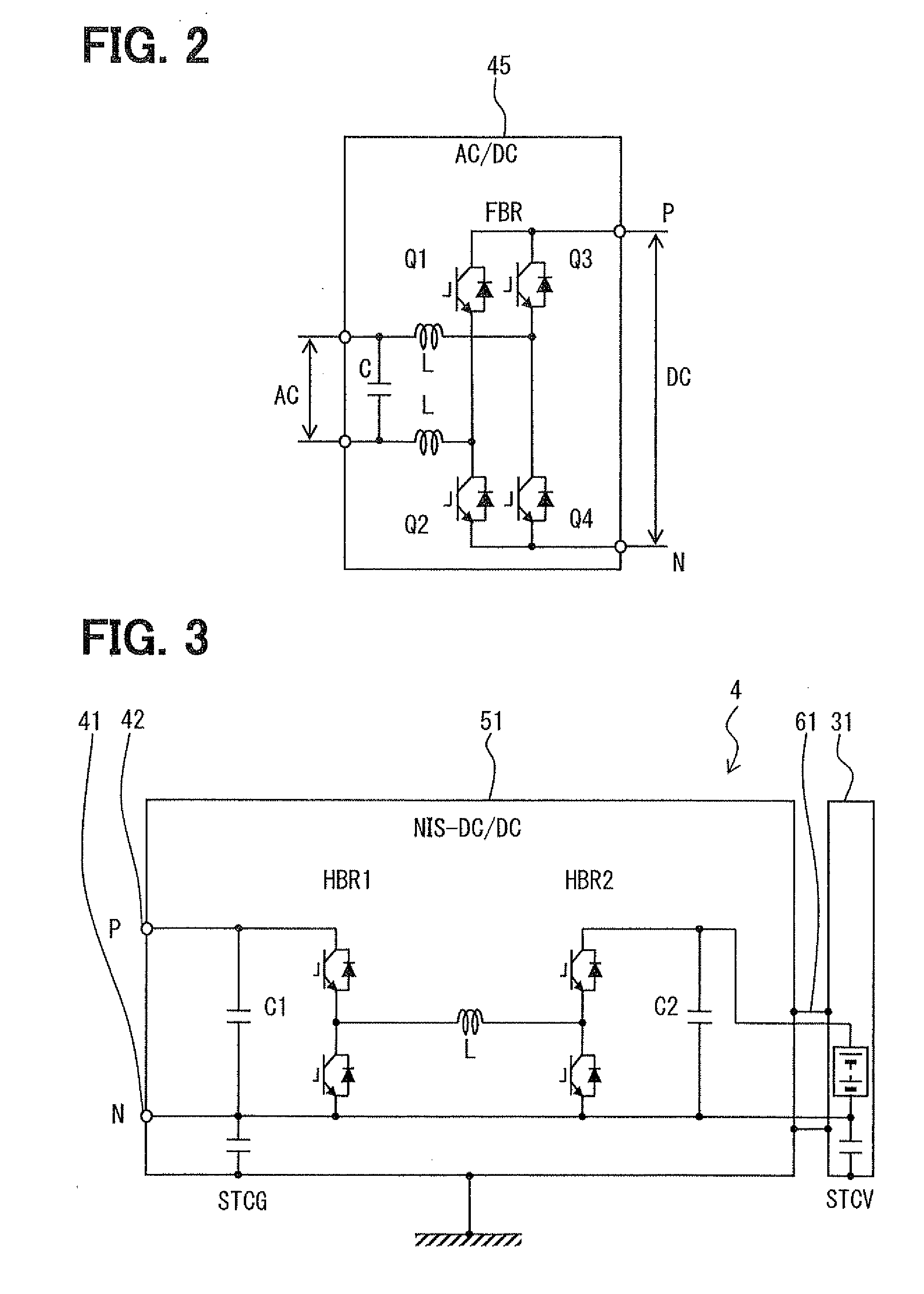DC power supply apparatus
a technology of power supply apparatus and power supply line, which is applied in the direction of electric variable regulation, process and machine control, instruments, etc., can solve the problems of power supply from the commercial power line system that may leak to the ground and reduce the efficiency of power conversion, and achieve the effect of improving high power conversion efficiency
- Summary
- Abstract
- Description
- Claims
- Application Information
AI Technical Summary
Benefits of technology
Problems solved by technology
Method used
Image
Examples
first embodiment
[0028]Referring to FIG. 1, a charging system 1 includes a DC power supply apparatus according to a first embodiment. The charging system 1 includes one or plural power source devices 2, one or plural load devices 3 and a charging circuit 4, which is a conversion circuit for converting power supplied from each power source device 2. Power supplied from the power source device 2 is converted to DC power of a predetermined voltage by the charging circuit 4 and supplied to the load device 3. The charging system 1 may be formed for a house, a housing complex or a charging station, which is provided for charging an unspecified number of load devices.
[0029]Each power source device 2 supplies power of a predetermined power source voltage. The power source device 2 may be a DC power source for supplying DC power or an AC power source for supplying AC power. The DC power source includes a solar power generator 21 and a stationary type secondary battery 22. The AC power source includes a comme...
second embodiment
[0069]In a DC power supply apparatus according to a second embodiment, as shown in FIG. 9, a charging circuit (conversion circuit) 204 is configured to charge secondary batteries 31 and 231 of two vehicles at the same time. The charging circuit 204 includes first cables 61 and second cables 261.
[0070]A switching relay (SW-RL) 253 includes single-throw double-pole relays (RLV1, RLV2, RLV3 and RLV4) 253a, 253b, 253c and 253d, which form the system relay RLV. The relays 253a, 253b, 253c and 253d connect the non-insulating converter circuit 51 and the insulating converter circuit 52 switchably to the first cables 61 and the second cables 261. The relays 253a, 253b, 253c and 253d connect the insulating converter circuit 52 and the second cables 261 when the insulating converter circuit 52 is connected to the first cables 61. The relays 253a, 253b, 253c and 253d connect the non-insulating converter circuit 51 and the second cables 261 when the insulating converter circuit 52 is connected ...
third embodiment
[0076]In a DC power supply apparatus according to a third embodiment, as shown in FIG. 10, a charging circuit (conversion circuit) 304 includes a switchable converter circuit 351 in place of the non-insulating converter circuit 51 and the insulating converter circuit 52, which are provided in the first and the second embodiments. The switchable converter circuit 351 is selectively switchable to a non-insulating circuit and an insulating circuit. The switchable converter circuit 351 is a switchable DC power conversion circuit (NIS-ISL-DC / DC). The switchable converter circuit 351 includes a part, which is provided as the insulating converter circuit, and a switching relay (SW-RL) 353, which is provided as a switching device. The system relay RLV includes two relays RLV1 and RLV2. A control circuit 354 controls the breaker relay 46 to disconnect the commercial power line system 23 from the charging circuit 304 and also controls the switching relay 353 to switch over the switchable conv...
PUM
 Login to View More
Login to View More Abstract
Description
Claims
Application Information
 Login to View More
Login to View More - R&D
- Intellectual Property
- Life Sciences
- Materials
- Tech Scout
- Unparalleled Data Quality
- Higher Quality Content
- 60% Fewer Hallucinations
Browse by: Latest US Patents, China's latest patents, Technical Efficacy Thesaurus, Application Domain, Technology Topic, Popular Technical Reports.
© 2025 PatSnap. All rights reserved.Legal|Privacy policy|Modern Slavery Act Transparency Statement|Sitemap|About US| Contact US: help@patsnap.com



